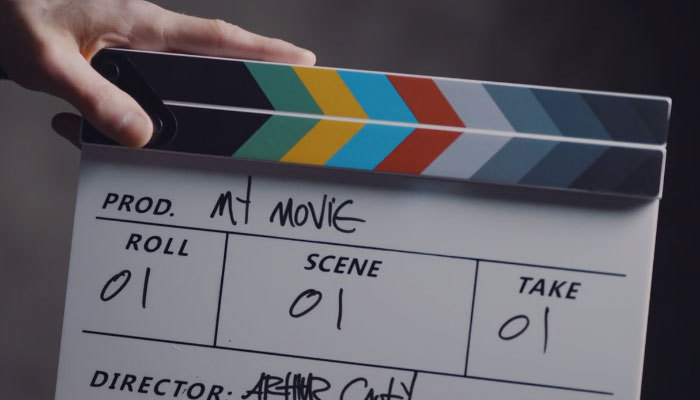Today on Art of the Cut, we speak with the two editors of Guillermo del Toro’s Pinocchio (Netflix) about the stop-motion animation film.
Holly Klein has been in the animation business since leaving college. She was an animator on Blue’s Clues and other kids' TV shows and transitioned into editorial, including work as an assistant editor on Coraline and ParaNorman.
Ken Schretzmann, ACE, began his career in live-action feature film editorial back in the mid-80s and worked as an assistant editor on films like Fried Green Tomatoes, Get Shorty, and Men In Black. He edited the live-action feature The Modern Adventures of Tom Sawyer before transitioning to animation editorial working on Pixar films such as Toy Story 2, Monsters Inc., Cars, and Toy Story 3.
Ken Schretzmann and Holly Klein discuss editing the Stop Motion Animated Guillermo del Toros Pinocchio
Holly, tell me a little bit about your background as an animation editor and any background you have in stop motion.KLEIN: I did start in animation after graduating from NYU. My first job was on a kid’s show that was just starting up called Blue’s Clues. I started out as a production assistant on this show that had, at the time, probably five people in its first season. I worked my way up to be an animator, then directed the animation, and left after seven years. It was quite a run for a first job out of college.
After that, I went on to different kids' shows around New York. Nick Jr. had a hub in New York City, and I worked on a show called Little Bill, then Wonder Pets, and had a group of people there that would go to different productions and use our skills in similar ways.
After New York, I decided to move to London to get a master's degree. I went to the Royal College of Art and made my own films for a couple of years. That's where I really started to get into editing. I helped out with a couple of features in the East End and then was editing commercials there. Then I moved to Portland 15 years ago to work on Coraline. LAIKA in Hillsboro was just starting up, and they were recruiting a lot of stop-motion talent from around the world. I didn't have any stop-motion experience but knew a lot of people in London that did a lot of stop-motion animation. I was one of a hundred people that moved from London to work on Coraline at LAIKA and was offered an assistant editing role there. Then I assisted on ParaNorman and helped out at the end of Boxtrolls as well.
I'm in the unique position of only having edited stop-motion films which, for an animation editor, is very odd indeed since there are not many of them around the world. But I took a break, raised my kids, and my husband continued to work there. The staff changed and grew, but then when I went to interview for Pinocchio, it felt like all the same people from 2007. It was like a reunion of everybody I had known from the early days of stop motion that had now started at ShadowMachine and were crewing up in the same way we were back in the day.
Ken, tell us a little bit about your background.SCHRETZMANN: I'm gonna start way in the beginning. It just occurred to me that my first experience with film was when I was eight years old with Super 8 cameras, and stop motion was the first thing I did. I animated G.I. Joe's with my brothers, and I remember you'd send in the film, and it would come back a week later from Kodak. One time I got a note from the lab that said, "We enjoyed your movie," and that's been the best criticism. That was for just G.I. Joe running around on a backyard table. That's deep in my heart, and I never got a chance to work in stop motion before Pinocchio. This is like a boyhood dream come true to be working on this film up in Portland and see it actually happening. It's very exciting.
But I started as an assistant editor and moved up the ranks. I always worked in live-action as an assistant, and I was cutting some things. About 20 years ago, I got a call from an editor I worked with saying that they needed help on Monsters, Inc. in the Bay Area. I moved up for that film and ended up staying for quite a while. I spent about 12 years at Pixar working on things like Monsters Inc., Cars, and Toy Story 3. Since then, I’ve seen the animation world grow, and it has offered me lots of different opportunities. Every studio is in on the action. When I heard about Guillermo del Toro’s Pinocchio, I thought, "How do I get on that?" Through some connections, I got an interview and was lucky enough to get the job. I moved up to Portland for a year and worked on it.
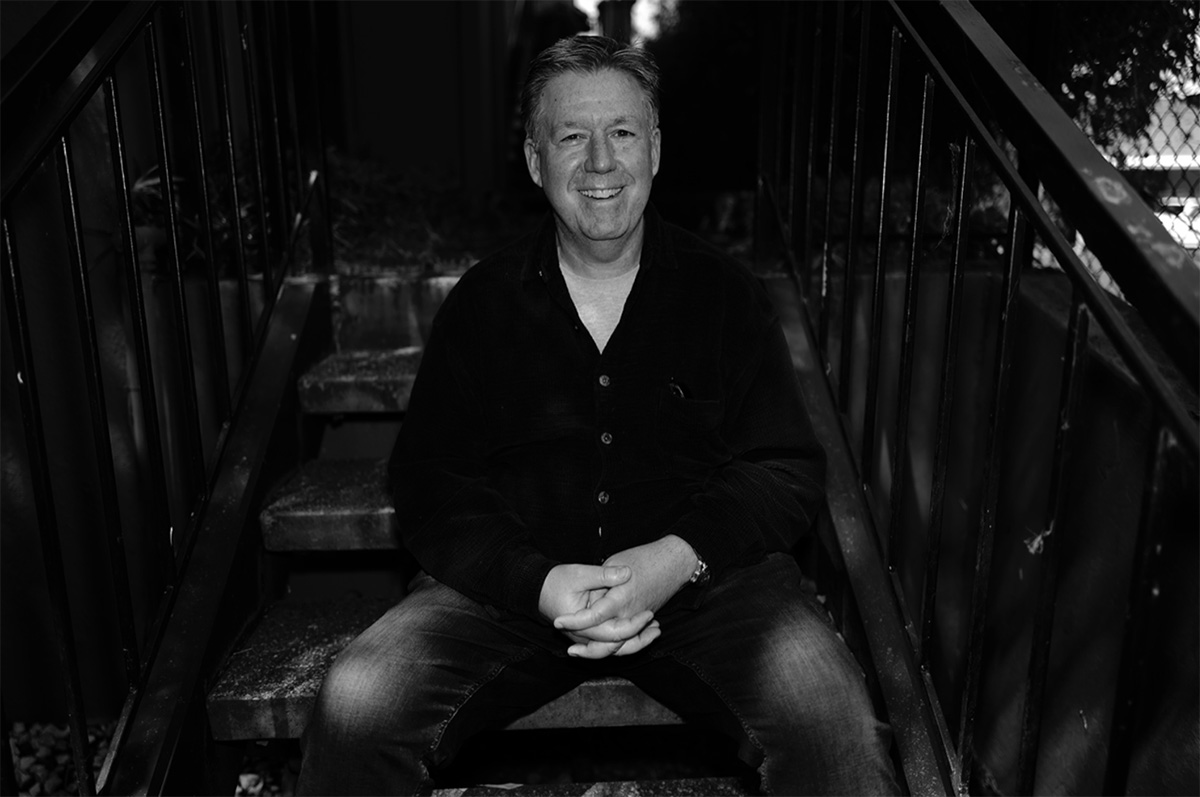 Editor Ken Schretzmann, ACE
Editor Ken Schretzmann, ACE
SCHRETZMANN: It seemed the animatics were exactly as if I were cutting animatics for a CG animated film. I don't think there was any difference. But it was in the back of my head that when they went to shoot it, they had one chance to get it right. They just do one take. I was really careful about the cutting pattern, the timing, and the angles. I knew they'd pretty much match that. In my experience in CG, you end up going back and forth a bit with the layout. You would get the shots in, you'd ask for corrections, and it was a little more fluid. But this seemed once you turned over the story reels, it had to be more locked.
Holly, what are some of the things that happen early on in animation editing that you're doing? You're working with storyboards, sound, and music. What are you delivering from years and years of working on the film?KLEIN: I was on the film for three years and three months, so really, it was a full evolution. When I started a month before Ken came to town, they definitely had this idea that Ken was gonna edit the animatic, and I would assist him in doing that. We were aspiring to have a locked cut. When we started dropping shots in, we would start animating. There was a crossover where Ken saw the first animated shots coming in and the first passes of camera moves, and things like that.
Shots could be in an array of stages, from camera move to the animators acting out the scenes to lighting passes. Then you go to a rehearsal in a block where things kind of start coming together, and the animator is doing a rough move-through of the character. Then you get to the final shot, where they go for the animation. My role in that was just to put together a collage of passes in the Avid. They're using that as a map of what they're doing on each set, and they have anywhere from 40 to 60 stages going at one time.
Various iterations happen, so when you get shots, you're adjusting the cut throughout the editing process, you're seeing the film develop, and everything is constantly adjusting. Then you're using the locked shots or what you have as a map for the VFX process, which is the last iteration. So you're briefing the VFX houses on what you've shot and what they need to be using in all the VFX passes. You're really going from flat storyboard to finished animation to completed CG in one Avid project.
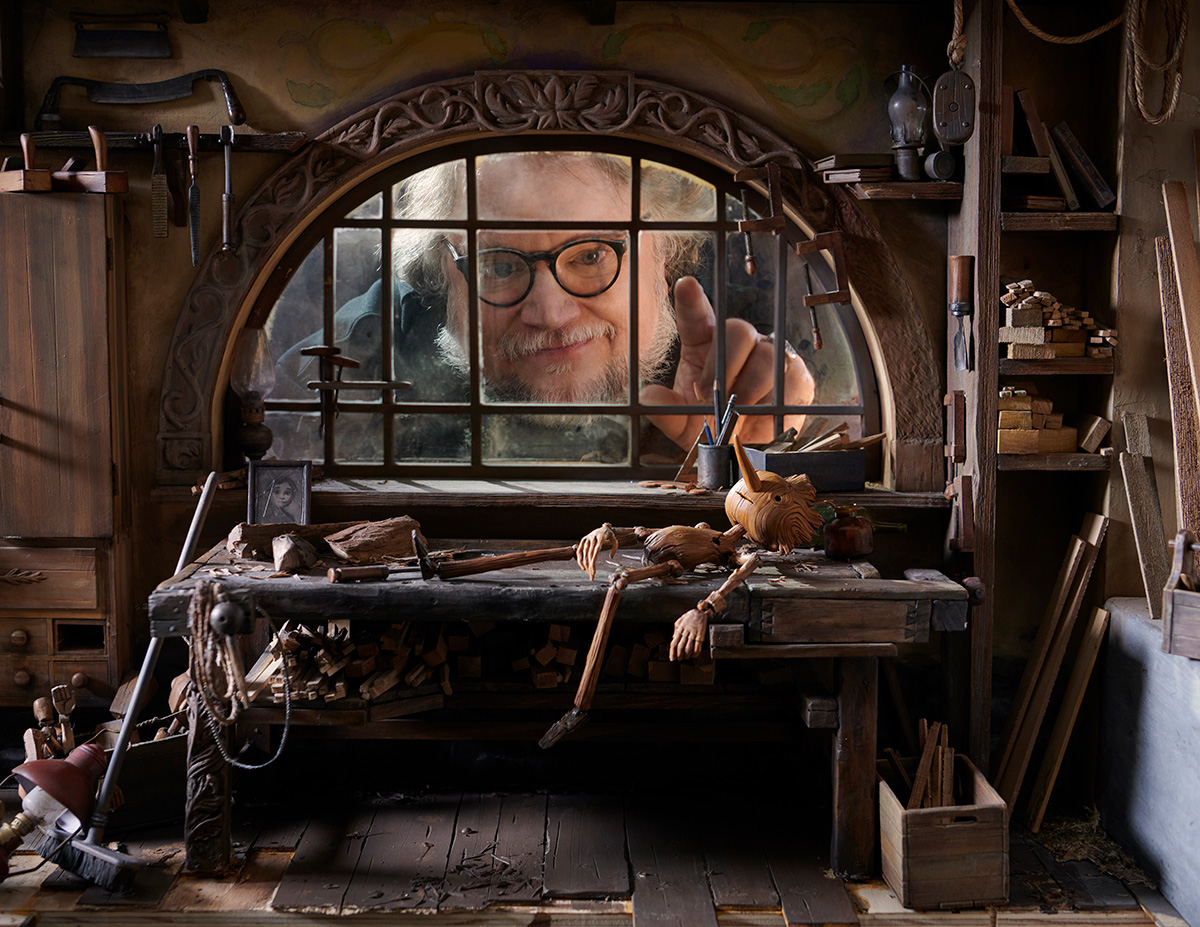 Director Guillermo del Toro on the set of Pinocchio
Director Guillermo del Toro on the set of Pinocchio
SCHRETZMANN: We started with a very good script that Guillermo had been developing for years, so it was in really good shape. Our first task was to get that version up as fast as we could. Guillermo had recorded a table read, which was interesting, and I hadn't experienced that. My first cut was always dipping into that table read, which really helped in getting the reels up quickly. Once we got the sequences up, Mark Gustafson and I started going through it and polishing. You would go through the same process as in live-action editing: see if the sequence works, what's working, and what's not, and you start re-cutting it. But we also have the benefit of doing little tweaky rewrites along the way. Also, in story reels, we're not only cutting dialogue, but we're cutting sound effects and music to tie it together to see how it'll play as a film. So we did that sequence by sequence in many iterations of each one. I don't think there were big changes in terms of losing or adding sequences at that point, but we got the reels up. It took us quite a while. It took me 12 months to finally get to the end and lock the story reel.
KLEIN: The other thing I remember is we had early iterations of the songs as well. Then Guillermo would have sessions with the story artists where he would brief and re-brief for the shots in the song. We were constantly getting new boards for new sequences as he was having new ideas, and we were sending things along for review.
SCHRETZMANN: The details of what was happening on screen was something the story team brainstormed and would give us basically keyframes to put it together and feel it out. Songs are interesting, you're locked into that length and that timing. So to get Volpe from one place to another, you use the keyframes to pace that out. We went back and forth a little bit with the story, but in terms of the music, Holly experienced some changes further down the road once it went into production.
KLEIN: The interesting thing about the animatic phase in stop motion is they definitely have ideas about what they want to shoot first based on what they can build in time. The first thing up was the birch forest where Pinocchio and Geppetto are arguing. It wasn't necessarily cutting linear sequences. We had a big board, and we would have the priority sequences based on what the art department was building. So it wasn't always act one, act two, act three. It was dabbling here, dabbling there. I would work in rough cuts while Ken was refining and meeting with Mark. Then you would put the reels up and see how a chunk was working at a time.
 Netflix Pinocchio, full animatic timeline
Netflix Pinocchio, full animatic timeline
SCHRETZMANN: You start to see what kind of shape the film is taking and if there are any weak points.
KLEIN: What we learned is a lot of characterization. Who is this Pinocchio? How is he moving through scenes, the tone of each scene and how that's developing, and how you're manipulating the tone with music.
SCHRETZMANN: I found a feeling of each scene through music. When I started the job, I pulled all the scores from Alexandre and all the Guillermo del Toro films. Plus, because it took place in Italy, I grabbed scores from any film that took place in Italy. Il Postino was one of my favorites. I grabbed all kinds of traditional Italian music, and then we started really scouring the internet for fascist marching songs. Which felt a little weird, but we found a few that worked. So we got a sense of the flow of it from the beginning, the feeling of it and the sadness, and how to make some of the transitions into something lighter. I worked that out with temp music.
Were transitional tonal shifts something that you were trying to deal with?SCHRETZMANN: I tended to lean towards the drama of it and let the comedy cut through. But there's one shift from the beginning when we've followed all of Geppetto's story and his son through that montage in the beginning. Then we reveal Cricket showing up, meaning, "Let's lighten this film now." I found I really had to open up that moment. The first time I cut it, they were just butting against each other. But I felt like we needed some time to get into the grass and let the music shift and lighten up.
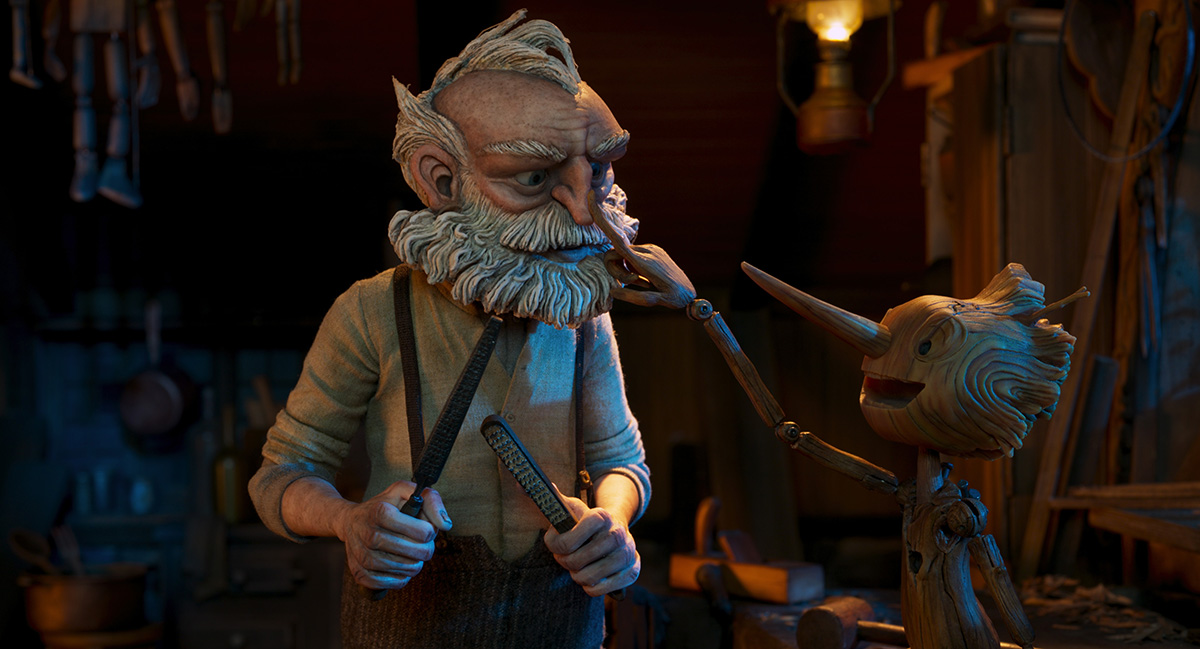
SCHRETZMANN: Initially, it was coming out of Geppetto's window, and it's just filled with sorrow. Then we came out, revealed the Cricket, and he just launched into his dialogue, "Here I am!" It just slammed against it, so they were able to reboard it for me. So we had a moment to go outside and drift into the grass and then come back up. It just gave it more space.
Tell me a little bit about what you're getting after you deliver a storyboard to the production team.KLEIN: So each animator sees their shot in storyboards, and then the team that's going to be on that unit — which is a certain amount of square footage out in a warehouse — has to figure out how they're gonna make this shot. They get the general angle from the storyboards, they put a physical camera there, they put a rough version of a puppet, and they take a picture first. They ask, "Is that the idea of the shot?" At the same time, the animator is acting it out with their iPhone. They'll be on steps outside or in very odd places in the building in the rafters doing rafter shots or wherever they need to be to get a similar angle and to have their acting performance inform what they're going to be doing in the shot. The animators are over in one corner doing that.
Then there's a camera team on each unit: a main camera person and assistant lighting people. This is all under the direction of the director of photography, Frank Passingham. They do a general lighting idea about what they're gonna shine lights on. If there are a lot of the camp scenes, there would be a spotlight going through them. So they're timing that out. Then a lot of the shots have a camera move just like you would in live action: a boom, or a zoom, or something that's generally on a motion control track. The great thing about stop motion is everything's built and everything's miniature, and everything's physical. But all the limitations of stop motion are within that as well.
If the storyboard is zooming through the grass for quite a while and it's a two or three-second shot, you might not have enough physical warehouse space in that unit to have that camera move through that area of space for that long. So you get camera iterations to make sure that the timing of the shot — as the storyboards lay it out — is what you can do in that physical space. Then a long process of adjustments begins where you're negotiating what the storyboards say and what the actual shot's gonna look like.
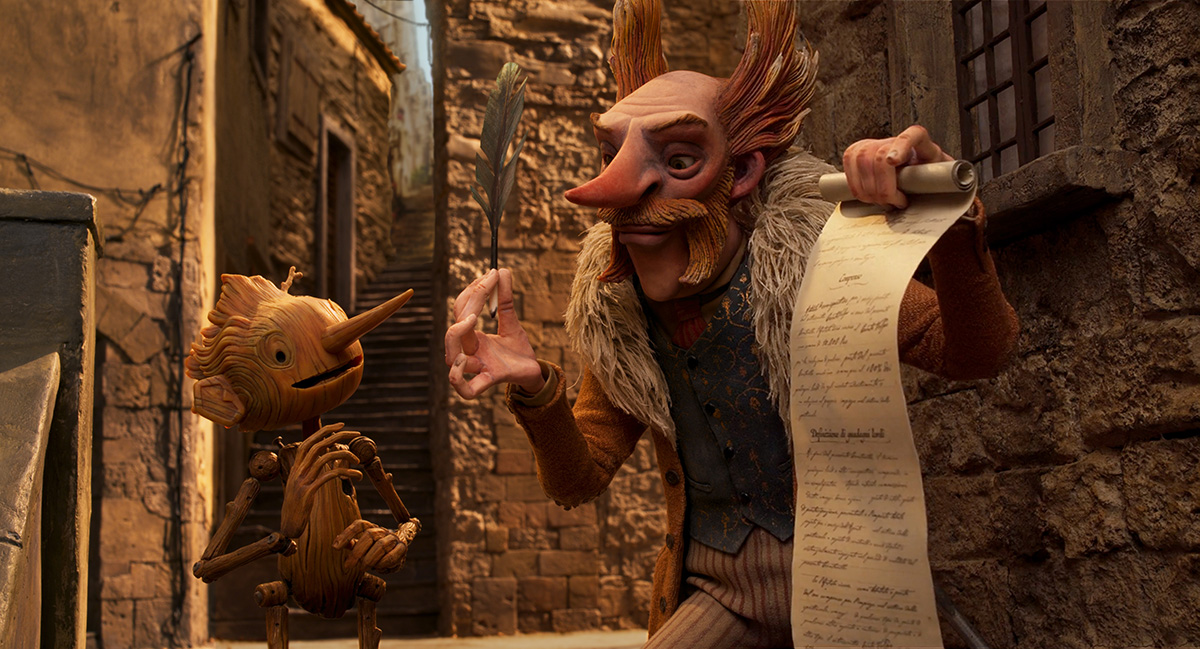
KLEIN: I'm gonna cut every single thing over storyboards. The first thing I'm gonna cut is still over there. They're just gonna look at it in the cut and ask, "Does that angle generally work?" Then I'm gonna get a 1st camera move. I'm using a lot of Avid effects to re-speed that camera move. Sometimes we'll say, "Let's make that 10% slower or 20% slower." But as I'm doing that, they have to check that they have enough track so that if I make it 20% slower, they can still get to that point, or they have enough track for the camera to end up there. So that's sometimes a limitation. Then at the same time, I'm collaging in the acting of the person. So I'm putting in the acting of the person against the camera move, and sometimes I'm sliding with an animatic in different areas of the Avid space.
It's what you would do if you just had something like cardboard cutouts and you are moving your camera through the cardboard cutouts. Then you're replacing it at every iteration, and some of these iterations I'll never get when they actually shoot the physical shot. Frank had so many ideas about what he was gonna use in the grade. There were bomb passes, and there were different lighting effects. As the animator's doing that, they're firing off all these different lighting passes as well. But throughout the process, when I get them, it goes from a very rough layout to a block, which is where the animator is doing animation every five frames or ten frames while the camera moves. Then everybody agrees, "Okay, this is working as close as we can get it," and then they go for the shot. That all happens in the course of two or three days. They're doing constant iterations because they're trying to turn around these units as quickly as possible.
What is driving the pacing? In live action, you're looking at people, at places, and at motion. But you don't have any of that in animation.SCHRETZMANN: You're not inspired by the material; you're imagining what this can be. One thing that's freeing is you don't have to worry about continuity. When I started it, it was actually kind of frightening because if you could cut anywhere, what is a "perfect cut"? Now I just cut more from a gut instinct to cut where I want to be. Sometimes things overlap and things like that, but you really are imagining. You're not seeing faces. You're seeing sketches. Really, the thing you're inspired by is the dialogue. By the way, these actors are not in the same room. They're all recording on different days, in different sessions. So my job is to take the various characters and cut them together in a way where it feels natural and feels like they're in the same room.
So a lot of my work is dialogue editing: matching each other's energy, putting in some overlaps, interrupting each other, and making it all feel natural. Then in terms of the pacing of the story reels, the pacing is a lot faster than it's going to be in the final version. It always expands once you get into animation. It seemed to happen a lot on this film where shots just grew, where you didn't even imagine all the details that would go into it, either the geography or the acting moments, and the animators were free to open up the shots as they needed.
But Guillermo specifically said, "Keep the whole thing tight. Don't worry about opening it up and worrying about how long the shot will be. We want the story reels to play on their own." I remember on Cars specifically, just cutting between Mater and McQueen talking, and they're outdoors, and I cut once to a wide shot and then back in, but I didn't realize that wide shot had all these mountains. It was this beautiful, expansive thing. If I knew that, if I could have imagined that, I would've hung on that longer.
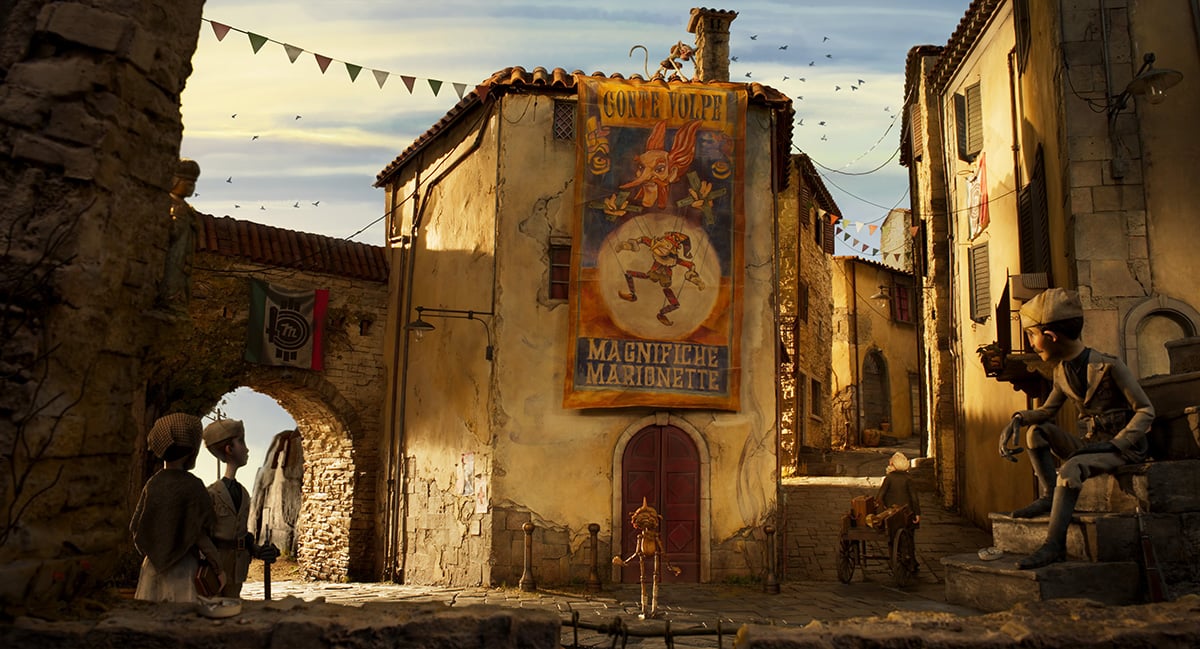
SCHRETZMANN: It was striking because I had left the film when I delivered the story reels. I don't think I saw a cut until a year later when they were really heavily in production, and it just blew my mind how gorgeous it looked. It's quite a leap going from rough sketches to what is finished, it's so beautiful.
What were some of the things that opened up or shrunk after you thought you had a locked cut?KLEIN: One of the things that was fascinating for me working on this film is to be witness to all of the animator briefs with Guillermo and Mark. I had not worked with a live-action director before. It was really fascinating to see how a live-action director approached animation. It was fascinating to hear these briefs, which are Guillermo briefing the animator the same way he would brief an actor. When the animator was doing a shot with Carlo, the young boy, he would say, "This is what I say when I direct child actors." A lot of that was direction in order to make the puppet appear that it was thinking and that it was actually motivating a lot of the action later on in the film. So he would say things like, "The puppet needs to look here, and then it needs to look here, and then we have to give it a beat." When the animator would do the live-action reference, we would always review the live-action reference in the brief with Guillermo. A lot of times, that's when he would talk about the missteps that he would like the animation to have to make it look more realistic. But he would also say, "Oh, I love that. Let's do it for 14 more frames. I love that. Let's do it for 12 more frames." I think we came out of every brief session saying, "Whoa, this film is growing. It's always growing." This is terrifying for production because every day of these films is a lot of time and a lot of money.
But what it does is it gives you breathability to the acting which was really interesting to me. A lot of times in animation, it's about keeping the story moving. It's about keeping momentum. I really witnessed a lot of pausing. A lot of it was, "This is another moment, guys. This is a moment." Getting through these moments, of course, there's gonna be shots that are just getting you to the next scene, and that was acknowledged as well. We've done the moment, now we're moving on.
But to hear somebody say, "This is what this moment is," and in order to have it feel like that moment in the film, you have to give it the time that it deserves. It was really exciting and fascinating. As an editor, it was interesting because you were learning how to build in the time in the front half so that it paid off story-wise later. That these characters had time to think about things, that they were invested in what was happening, and that later on, you knew that they had concluded things. You hadn't moved them through the process of concluding things.
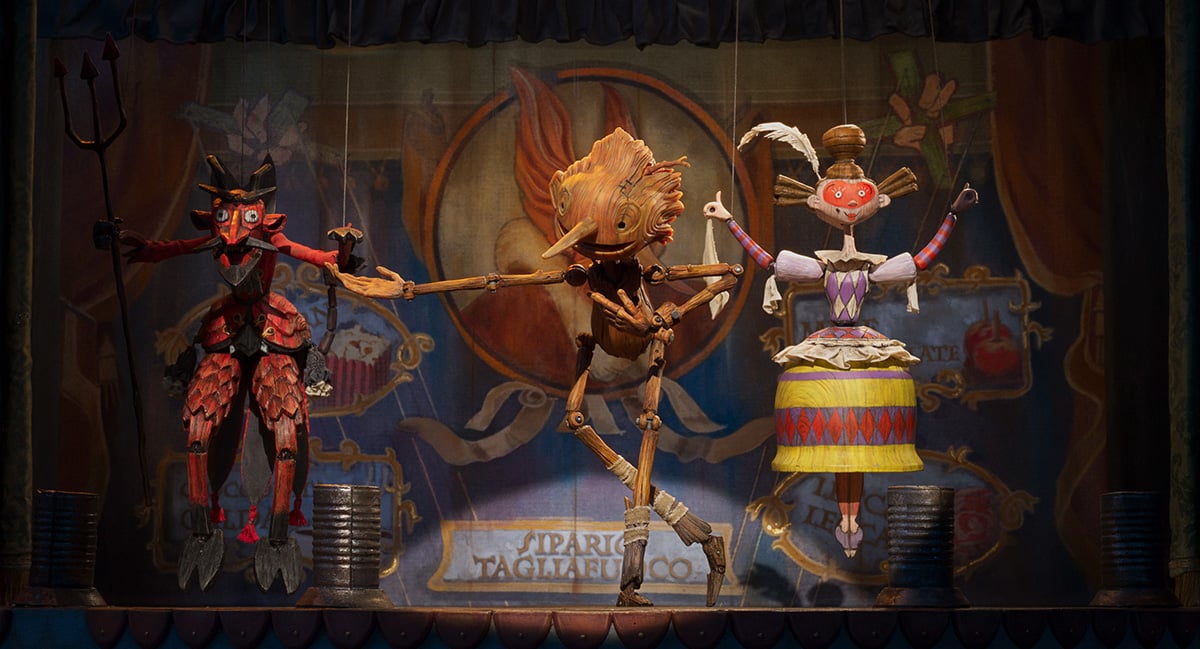
KLEIN: Of course, one of the big things that happened in this production is Covid. A couple of months before Ken left, we all left the studio. People were building things in their garages. People were making soldering stations in their barbecues. Everybody, in those first moments of Covid, just tried to keep the production going.
We were putting Avids in our cars and taking them home, and they said, "Keep cutting. We need to get the animatic done!" Ken finished the animatic in his apartment in Portland. Then honestly, it was a real challenge to keep stop-motion animation going while still being socially distanced because this is not a process that is compliant to socially distance. The set dresser, the landscape person, and the assistant lighting people are all on top of each other in these units. So they were instilling a sort of one person in, one person out system in the studio. Anybody that was on a computer, they said, "You're staying outta here," because they needed every square footage of the place in order to stay as distant as possible.
Since we went home in March 2020, I stayed at home, and I cut this film from my house. It was difficult because we were reviewing everything online, which can be very dubious with connection, especially when you have a giant Avid project chugging along. But it did allow us to follow Guillermo wherever he was. He was on different productions. He had different places to be during this. It was a place where we would just meet online all the time, all day. Everybody who needed to be at these meetings, whether they were out in a unit in Northwest Portland or whether they were in a different country, got to open the meeting, and there we were. We could review any cut at any time.
Did any of that stuff that he said in those meetings affect the editing?KLEIN: Absolutely. There was a lot of referencing the history of film with Guillermo, which was amazing. It's just amazing the knowledge of film he has. After every brief session, we would always pull clips from every film that he mentioned and see how the pacing of that was. But really, what it informed was the live-action reference element. We call them LAVs: Live Action Videos. So he would say, "Go back and LAV it again with this idea in." When you're making that collage of elements through the Avid with the camera move, and Guillermo says, "Okay, 14 more frames and re-LAV it with this idea." Then you might be onto a whole other idea. The fascinating thing is a lot of these shots that you're briefing are in completely different sequences in the film. So not all 15 animators are working on the same sequence. We number the sequence, so you might have three shots in sequence 200 that are changing. You might have one shot in 1800 that's changing. So different parts of the film are changing in different ways all the time.
The editing of these films is like putting together a puzzle. While you're putting together the puzzle, the shape of the puzzle pieces is constantly changing. So this piece is changing, you have to adjust those, and everything that we're doing, we're sending Guillermo mini-cuts. Shots around a camera iteration, shots around a live-action reference, so that he can see it in the run of three or five shots and get a feeling for if we're doing that moment.
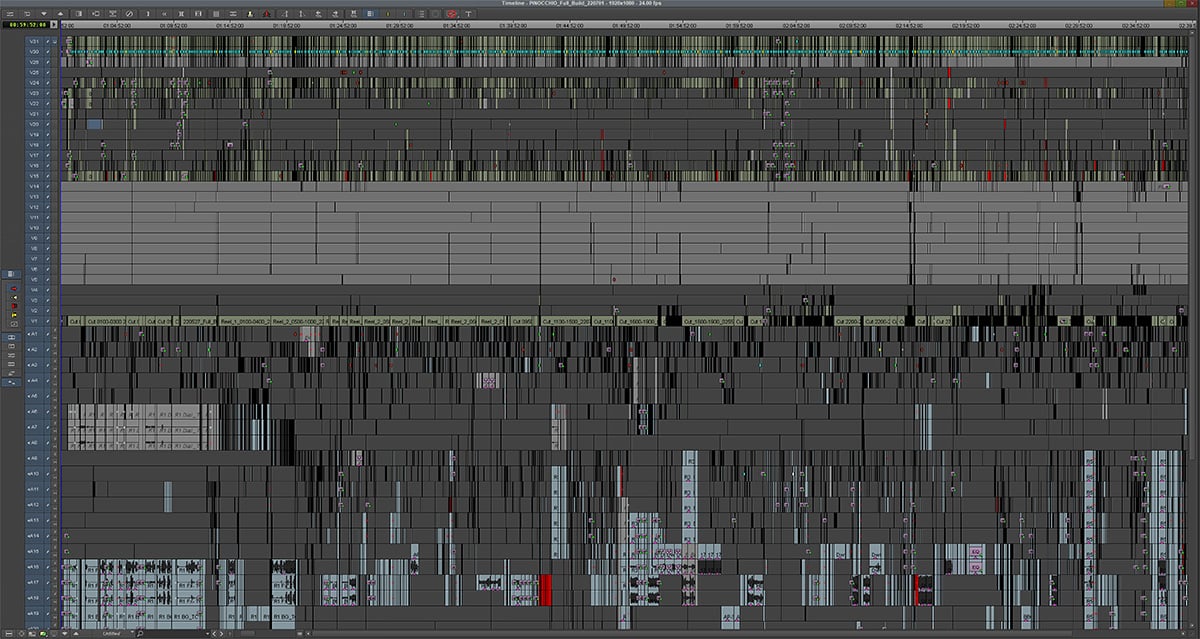 Netflix Pinocchio, production timeline
Netflix Pinocchio, production timeline
SCHRETZMANN: This film was not as workshopped as I'm used to on other animated films. You put your first cut up. It's not great. People have new ideas, and you're tearing it apart. On this film, we stayed on track with the general outline. It worked really well from the first cut, and it was about polishing it.
One thing I found surprising was sometimes you'll get a scene like when the Podesta and the priest visit Geppetto's home. There are two parts of the scene. There's the scene that's taking place at the table, and simultaneously, on the other end, you have Pinocchio and Candlewick by the fireplace, and you're cutting back and forth. One thing that's not written is the offscreen dialogue. When you cut away from Geppetto and his group, the dialogue has to continue in the background. I would get these notes, "This seems so empty," but what can you do? I ended up writing scratch dialogue and started to record that stuff. That happened all the time. It also happened with the rabbits in the purgatory playing cards. It felt dead when Pinocchio came out. We'd just have his lines, but only the key lines for the rabbits were written, and I wanted to fill it out in the reels. So we ended up recording it ourselves and writing it just to fill it out. A lot of things aren't on the page. There's a general feeling like, "Oh, something's missing."
Even things in the church, we had key things, but what the crowd should be doing wasn't written. I remember working that out. It took a few iterations to get that right. Pinocchio doesn't just show up, and everyone jumps out of their seats and says that he's an abomination. The group discovers it, they get angrier, and it has to build to a climax. Holly and I recorded some of those voices to help us build this scene. In the background, when Pinocchio walks in, there should be this call and response from the priest to the clergy and to the congregation. We didn't have that recorded or written or anything, and I actually grabbed some stuff off YouTube and used the audio just to make that work. That worked as a great reference for what we were going to do.
What was happening with either dialogue or sound effects?KLEIN: The other thing I wanted to mention is that some of this film was animated in Guadalajara, Mexico, where Guillermo is from. He wanted his hometown studio to have a piece of the film. So they actually animated all of the purgatory stuff. They were online with us as well. It was an interesting process to integrate their work. Then when we went into the visual effects stage, the main visual effects company was in Toronto, Canada. It was a true pan-North American situation there at every stage.

With all of the sound effects for this film especially, we kept the temp for a long time. We had Scott, the sound designer, working on things. He was collecting proprietary wood that he wanted to use and unique things, but he wasn't directly involved in the film until a pretty late stage. So we did have temp music, temp dot, and temp sound effects for quite a while.
As the film is evolving through different iterations from storyboard to visual effects, every cut has to be adjusted per temp music or to the sound effects. One thing that was challenging for me that I had never experienced before is that this was a musical. Almost every shot grew, and that is a particular puzzle when you have a song that's locked. If Volpe is not gonna come out of his tent for another six frames, or it takes him eight more frames to skid on his knees, then you have to find those frames in a different shot, or you have to adjust the music. It was terrifying for me to take Alexandre's music at some time and they would say, "It's feeling too long, let's cut out a verse, or this shot is feeling too long, can you find eight frames of this refrain?" And in no way am I a musician. Just to hear the music and to say, "Okay, I think I can repeat that here. Or do we wanna repeat that here? Or do we wanna actually make this shot longer and take it away from this shot?" Especially within those songs was one of the biggest editing challenges I've had thus far.
Everything, all of the sound effects and all of the music, temp or otherwise, needs to be adjusted with every cut. Because every time you take 10 frames out of this and you add 15 frames, the music and the moments that Ken originally created with that temp music have to be adjusted to the timing of the new moment or the length of the new moment. So even within finding the temp music moments, I would have to look at the temp music again and think, "Okay, can I extend this moment of the temp music, or can I go back to the temp music and find another eight frames of that?" So those things are another thing that are a constant adjustment.
Are you cutting things in sequences that are longer than a scene and shorter than a reel?SCHRETZMANN: I'm not sure why in animation, we call them sequences. Maybe because sometimes it encompasses a few scenes, but we call them sequences. We have about 40 to 44 different sequences. They get delivered at different times. We have different deadlines for each one. It's just like live-action where you get that day's dailies, and that's what you're gonna cut. But we work in sequences, and at some point, we start building it into 10, 20-minute reels down the road.
KLEIN: When Ken assembles his animatic cut, then we think of it in reels again. But then, when we start animating, it gets completely broken apart, and sometimes the sequences even feel long. How stop-motion is broken apart is per the sets. For example, they would build one large birch forest. Then as the scene is cut apart, the actual set is built so that it can be cut apart so that one animator can have a certain angle of the birch forest and they can animate a certain shot. Then another animator can have a different angle of the birch forest. So you'll have two people animating reverse of the same scene sometimes. Guillermo and Mark wanted to keep one animator on one sequence so that it has a continuity of acting and a continuity of feel. But production-wise, the way that it's split up is, "This is a sequence because it's in the doctor's office. This is a sequence because it's in Geppetto's bedroom." Then you're casting that with the animator per what sequence they want to have as an emotional arc for the scene.
SCHRETZMANN: I wanted to mention working in sequences, you can fall into a trap of forgetting that you're coming in and out of other scenes. It's really easy to fall into that trap of working in isolation. I've made a habit of always attaching a little handle at the beginning and the end of a sequence. I think very early about how we're gonna transition to the next scene or how the music's gonna flow into the next scene.
There are just these lovely moments where there's no dialogue, and you're just seeing the place. How do you space that out when you don't have a beautiful shot to look at?SCHRETZMANN: There's actually a purpose to all those shots. When they're going through town, and we cut wide, and we see the beautiful town, we're also making a point of showing that poster. We go to that shot a couple more times, and the third shot is the poster of Mussolini hanging over the poster of the circus. It gives you a chance to see how the politics in the town have evolved. But you're right. A lot of times, I don't know what's in the shot. I've got the foreground characters, but I don't have a clear sense of the geography.
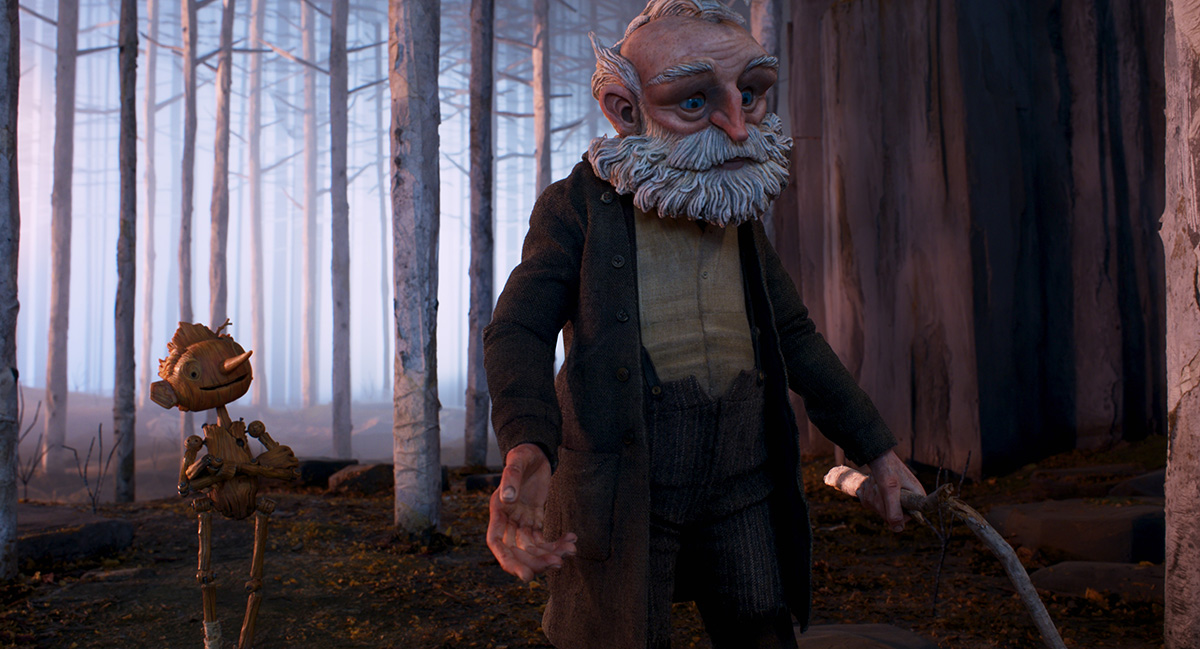
SCHRETZMANN: Artwork was hanging on the walls in the office. We got a sense of that. They'd have a lineup of all the poses of all the characters, so you had a sense of what everything would look like. That helps to imagine things as you're cutting.
KLEIN: When you work in animation, I'm fascinated to hear if you would have the shot. It's fascinating for me to talk to live-action people because it's such a post-production process. But I think the longer you work in animation, you start to intuitively know, "This is the establishing shot, and this is generally how long it's gonna be. You have an innate timing that comes with cutting these films for a while.
SCHRETZMANN: You develop a sense for that. Story seems to know more than the editors do about what's in the actual set. And if they shot something in a wide shot, I guess that's what we're gonna use. It's an interesting thing what the story reels do because they're so simple and sometimes all that noise in the background isn't really in the image. You really are focusing on the dialogue and the story, and that's an interesting thing. If you make the story solid and the film is working at that level, when the story reels make you cry at the end, then when this thing is animated, it's gonna play like gangbusters.
That is a hundred percent the experience that happened. I was crying twice. I don't know if it was being alone during the pandemic or what, but “Farewell Papa” always got to me. Then the first time I edited the ending, I found this great music that Alexandre did on another film, and everything clicked. I'm thinking, "My god, is it as good as I think it is? This is really emotional." I don't think that was trimmed down at all. That last scene has a lot of room to breathe.
Holly, can you talk about what you learned on this project?KLEIN: I just learned so much. A lot of times, the editorial department becomes a sort of hub for every element of production on an animated film. Because we did so much of this online and because we had to have contact with so many different people, I witnessed so many meetings that I never would've been privy to on any other film: when Rob DeSue, the art director, would present artwork for a new sequence, or when Guillermo would ask, "What are our ideas for the sky for this?" He would put up 10 different painted images of the sky. Those are meetings that editorial wouldn't necessarily be a part of. Animator briefs are things that we would be a part of. Witnessing how VFX come together, Guillermo's extensive knowledge of what the comping needs to happen in the VFX stage, and every minute detail of every process within the film was an education for me. So the editing and the process of going through the editing of the film was one thing, and cutting with Guillermo is exciting and new. But also, just seeing more details than I've ever seen and being privy to those conversations constantly made me learn more about the process than I ever knew.
Ken, what did you learn from working with Guillermo? How did you collaborate with him and the other director?SCHRETZMANN:Guillermo came in and out of the cutting room. I got a lot of the notes when he met with the story artist and Mark on their own and would look at a sequence and give them change notes. But really, I was more in the trenches with Mark every day cutting these scenes. But the thing I learned from Guillermo is he would come into the cutting room, I'd show him a scene once, and he would give the kind of notes as if he saw it a few times already. Just the first pass, he noticed everything. He would give notes as if he's been thinking about this. He would say, "Oh, this hand needs to be doing this, or let's give him this prop." And I think, "My god, I've never seen that before." The guy's brilliant. He knows exactly what he wants, and he is been thinking about this film for so long.
Ken and Holly, thank you so much. I learned a ton from this interview. I really appreciate everything you did on film and your time with me here today.
SCHRETZMANN: It was a real pleasure.
KLEIN: Thanks, Steve.
